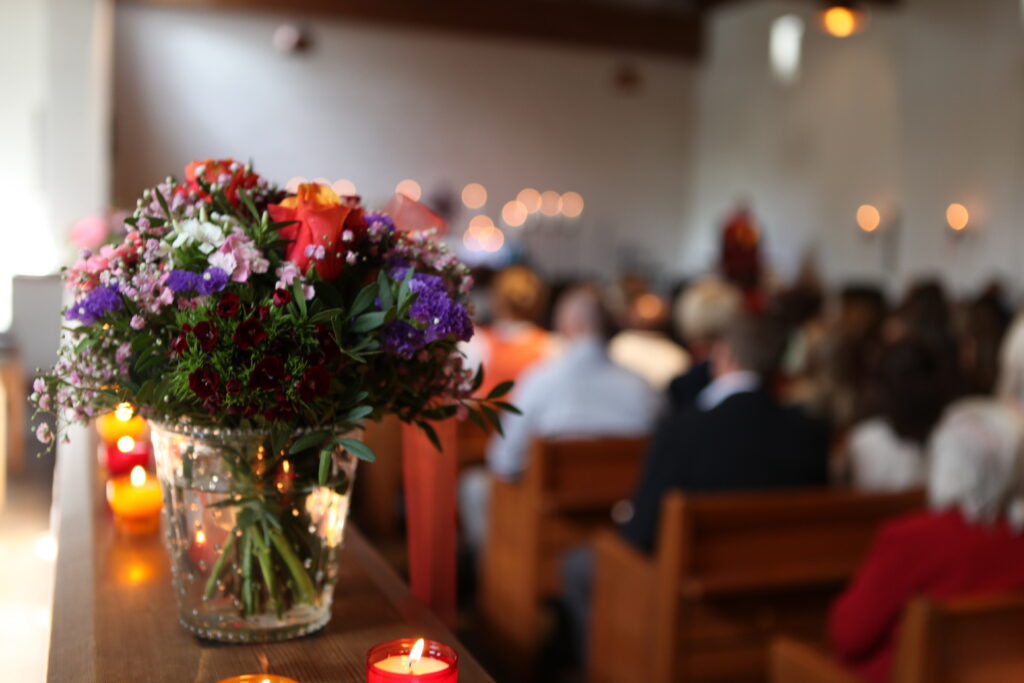Some things to think about
Who are you going to ask?
Leading a funeral service is a big deal. The person you ask needs to handle both the technical and delivery side of the ceremony and the emotional aspect of it for them personally. Who among your circle is best placed to do this? Someone very close, such as a spouse, partner or child, might be too close emotionally. Someone slightly further away, such as a cousin, colleague or friend, might be more able to balance the two roles.
What will they need to do?
The person you ask will need to:
- Have a good, clear speaking voice
- Discuss the ceremony with the family
- Prepare a structure for the ceremony
- Lead the ceremony on the day
- Coordinate contributors to the ceremony
- Coordinate audio and video facilities at the venue
- Operate committal mechanisms (eg. curtains at a crematorium)
- Keep things running on time on the day
- Provide details for any printed order of ceremony
- Give clear directions to mourners and speakers as to what they should do and when
- Work with the Funeral Director to support the family and mourners
Things to think about
How will the ceremony be planned? Be sure to meet or Zoom the family and set aside a good amount of time for this.
What is the ceremony designed to do and to be? Is it a very traditional, sombre event? Is it a more upbeat, celebratory event? Perhaps you even want to arrange something innovative and radical? There is no rule on this for you to be bound by.
Agree a structure. Perhaps the ceremony is formally designed to follow the life of the person, from their earliest days to today. Significant music and addresses from friends might fit in along the way.
Another approach might be to focus on key aspects of the person’s life. One part might be about their work. Another part might be about an aspect of their social or family life, with contributions from people for each of these.
What music and audio-visual elements might there be and who will prepare these? When will they need to be ready? Do resources need to be laid on that venue to play these?
How long is the ceremony to last? At a crematorium there will be a set amount of time (which includes the time required to get people in and out of the venue). You will need to ensure that any speakers keep their contributions to an agreed length.
You may need to support people who do not feel able to make their contribution on the day. Make sure you have a copy of their text. Be ready to support them both emotionally and with delivery. You might read an address for them, or you may need to have a recording on standby in the case of music or a performance.
Equally, do you have a second person on standby to help you? Be ready for this to be emotionally challenging.
What will happen at the point of committal? Typically at a burial, the coffin is lowered, but it needn’t be. This could be done later if, for example, people wanted to lay a hand or flowers on the coffin before they leave.
At a crematorium there may be a number of options, including curtains or gates closing, the coffin moving out of view, or the mourners simply leaving when they are ready.
How will the ceremony end?
Try to have a clearly defined end to the ceremony, so that mourners know this point has been reached.
All present will take their leave both of the person who has died and of the ceremony. As celebrant you will prepare them for this by what you say and do.
How we will help
Our team and our funeral director will work with you as much or as little as you require. This can include:
- Arranging a visit to the venue (and accompanying you)
- Liaising with music and AV providers
- Reviewing timings with you
- Training and support on committal options
- Support and guidance throughout the arrangements
- Providing texts of possible readings, poems and words of committal
- Coordinating resources to deliver the ceremony
- Printing material for mourners and contributors
- Enlisting a trained celebrant to assist, if required
You have a great deal of freedom design and deliver a ceremony that suits you, the person who has died, and friends and family who will attend. Your creativity and imagination have free rein.





